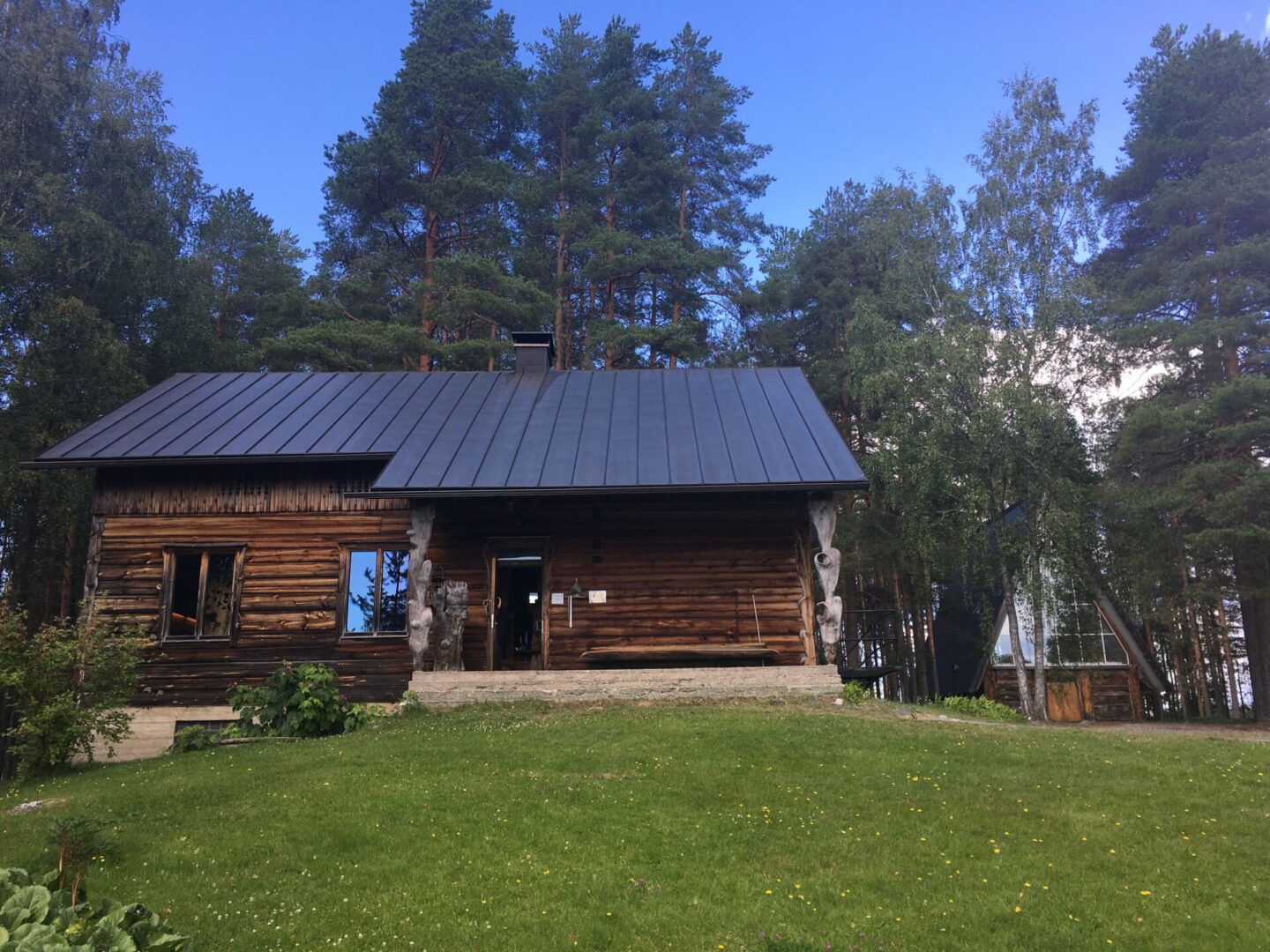
On the shore of Vuonislahti Lake lies Paateri, a hidden gem of a museum in North Karelia. Here visitors can step into a fairytale world where wood has been beautifully transformed into the most imaginative sculptures. The former home – now turned museum – of Finnish sculptor Eva Ryynänen is a must-visit for anyone visiting the region of Lieksa in North Karelia. In fact, this place is even worth a trip on its own!
Natural Beauty
We drive through what could be described as the epitome of Finnish summer landscapes. Lush green forest, blue lakes and meadows. Seemingly endless rows of bright pink fireweed line the side of the open road.
And finally we arrive at our destination: Paateri. Vuonislahti Lake beckons invitingly in the distance and tall pine trees stretch towards the blue sky. The North Karelian air is fresh to breathe in and there’s a certain aura of tranquillity over the whole area.
Home of one of Finland’s Greatest Sculptors

Someone might describe Paateri as being located in the middle of nowhere. But for artist Eva Ryynänen and her husband Paavo Ryynänen, this was the heart of their world. Paateri was both their home as well as their workplace for half a century.
Eva Ryynänen was born in 1915 in Vieremä in the Norther Savonia region. From a young age she loved to carve wood into different creatures and characters she could sense within it. Her first exhibition was held in 1940.
During her career as a sculptor she finished around 500 sculptures, many of which were sold overseas. She received numerous rewards for her work.
She met her husband Paavo Ryynänen during the war and once they married, they settled in Lieksa, the region Paavo came from. They moved into the house that would be their home for the next 50 years in 1953.
At first, Paateri was a farm. But as Eva dedicated more and more of her time to her artwork, the place slowly transformed and the barn became an atelier.
What is There to See Today?

By the 1970’s Eva was increasingly famous and Paateri became a tourist attraction. Busloads of people would come to watch her work in the atelier.
Although they’d wished for children, the couple were never blessed with any. So they started planning for Paateri to be turned into a museum after their death. Eva died in 2001 and Paavo just a few months after her. Respecting their wishes, Paateri became a museum that is now run by the town of Lieksa.

Today there are four buildings in the area that are all part of the museum. All of the buildings were designed by Eva. There’s Eva and Paavo’s home, the atelier, a café and what many consider to be Eva’s grand finale as a sculptor – Paateri Church, completed in 1991.
Not only do all of the buildings house plenty of exquisite sculptures or beautifully decorated furniture – they are also pieces of art themselves. It’s the kind of place where the more you look, the more you see. There are two roosters on top of a sculpted fire escape, the kitchen cupboard has a group of majestic cranes carved into them, two giant coffee pots adorn the café doors and in the atelier a giant bear holds up the guest book – just to name a few examples of the incredible details.
One of the things that is most striking about her work is how she incorporates imperfections into her pieces. For example you’ll notice that instead of trying to remove or cover up knots in the wood, they become an integral part of the sculpture – like the nose of a bear or the eye of a crane. In her opinion, her job as an artist was just to free the sculpture that was already in the wood, not to turn the wood into something it wasn’t.




How to Visit Paateri

Paateri is located in the municipality of Lieksa in North Karelia. From the city of Joensuu it’s a little over one hour by car. If you’re visiting Koli National Park it’s also about one hour by car. There’s free parking by the museum.
I recommend visiting Paateri independently by car as the selection of guided organised tours varies from year to year. Most of these are also for specific groups only and thus not open for everyone.
Paateri is open every day at 10-18 during the summer season. In 2021 the summer season stretches from 15th of May to 15th of September. The entrance fee is 8 euros for adults. Those under 18 years of age can visit for free.
The museum gets around 15.000 visitors a year, but there were no crowds when we visited in 2020. The area is large so even though you’d happen to visit during a crowded day there’s plenty of space.
There’s not that much information about Eva online. But don’t worry, you don’t have to know all the details to enjoy a visit as there’s a guide on site.
Fast Facts About Paateri
The most important facts in a nutshell:
- Located at Paateri 21, 81560 Vuonisjärvi. It’s about one hour by car from both Joensuu and Koli.
- The museum is the former home of Finnish artist Eva Ryynänen, one of Finland’s most famous female artists.
- During her lifetime she completed around 500 supltures of wood.
- When Eva and her husband died their home as well as the three other buildings on their property were transformed into a museum.
- The museum is one of the region’s most popular attractions, receiving around 15.000 visitors annually.
- The museum is open daily at 10-18 during the summer season (mid-May to mid-September).
- There’s free parking.
- The entrance fee is 8 euro (free for those under 18 years old).
- There’s a lovely café at the museum (designed by Eva herself) with both snacks and drinks as well as toilets.
